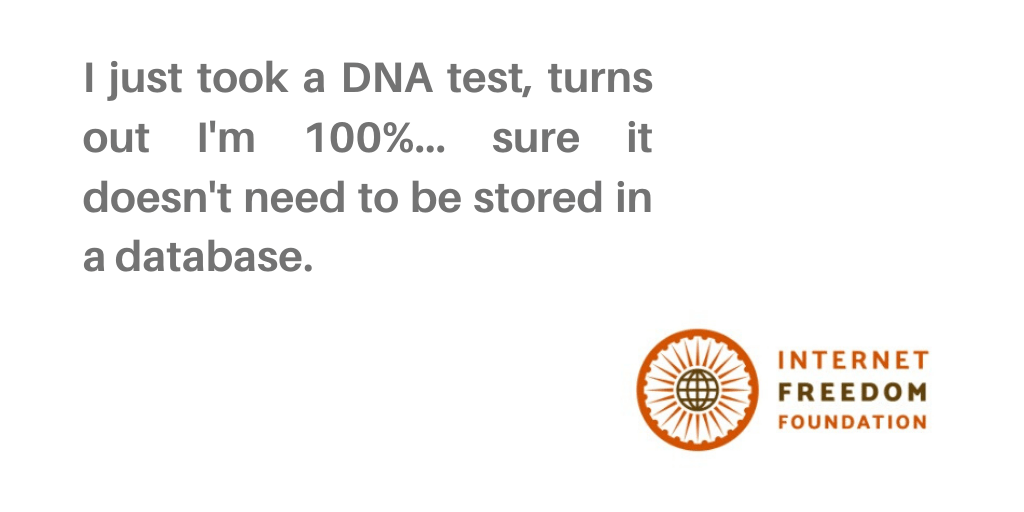
Tl;dr
The DNA Bill is back. The DNA Bill aims to regulate the use and outputs of DNA technology in certain cases and has been the subject of many a debate. It was introduced once again in July 2019 in the Lok Sabha after having lapsed in 2018. It was then referred to the Parliamentary Standing Committee of Science and Technology, Environment, Forests and Climate Change on October 18. The Committee invited comments on the Bill till November 18 and oh, did we have a lot of comments.
What's it all about?
India has been attempting to introduce legislation that regulates DNA technology since the early 2000's but thankfully has been largely unsuccessful until recently, making our fears quite real. The current DNA Technology (Use and Application) Regulation Bill, 2019 has seen a number of redrafts bringing it to its present form and yet continues to be problematic.
We're grateful to be able to voice these concerns as the Parliamentary Standing Committee on Science and Technology, Environment, Forests and Climate Change has invited comments on the Bill after it was referred to them. Unfortunately, as submissions made cannot be fully public prior to the Committee publishing their report, so we highlight our major concerns to give you an understanding of why we think the DNA Bill not only needs to undergo further work but also needs to be introduced only after a solid data protection law is in place.
A few of our very many concerns
- No data protection legislative framework: With no overarching data protection legislation in India, the lack of obligation within the Bill to ensure protection especially by the DNA Laboratory as a either mere collectors or even processors of the DNA collected, have no alternative safeguards in place to remedy data breaches or ensure informed consent. Similarly, there is nothing to govern the sharing of such sensitive data, ensuring purpose limitation is maintained.
- Profiling and surveillance: DNA profiles can reveal extremely sensitive information about an individual such as their skin colour, illness, susceptibility to diseases and any access to such intrusive information can be misused to specifically target individuals with their own genetic data and is particularly worrying as it could be used to incorrectly link a particular caste/community to criminal activities. Further, in the event that such a databases are then linked to others worrying databases in existence, it is bound to give rise to Government conducted mass surveillance.
- Overbroad provisions: Our submission tackles the lack of legitimate use by the Bill; it indicates that DNA technology intends to be used for extremely wide criminal and civil purposes (alarm bells are ringing). We argue that the Bill as such extensive databasing of DNA data requires to meet the conditions set by the Supreme Court's judgement in Puttaswamy of which one is a greater public purpose, the databasing of DNA used in civil cases does not fulfill this criteria. Further, even within criminal cases, there is need to limit the collection of DNA to the investigation and prosecution of cognizable crimes to ensure the data in the DNA database is minimal and controlled.
The submission details a plethora of other concerns ranging from lack of privacy safeguards such as no informed consent, storage and sharing of information and the power of the DNA profiling board.
We are grateful that the Committee has invited non-official witnesses/experts to provide their views on November 27 and hope that both written and oral submissions that come their way will be taken into strong consideration, resulting in the suggestion of a much required revising of the Bill.
Important Documents:
- Cover letter attached to the call for comments on the DNA Technology (Use and Application) Regulation, 2019 by the Parliamentary Standing Committee on Science and Technology, Environment, Forests and Climate Change dated 18.11.2019 [link]
